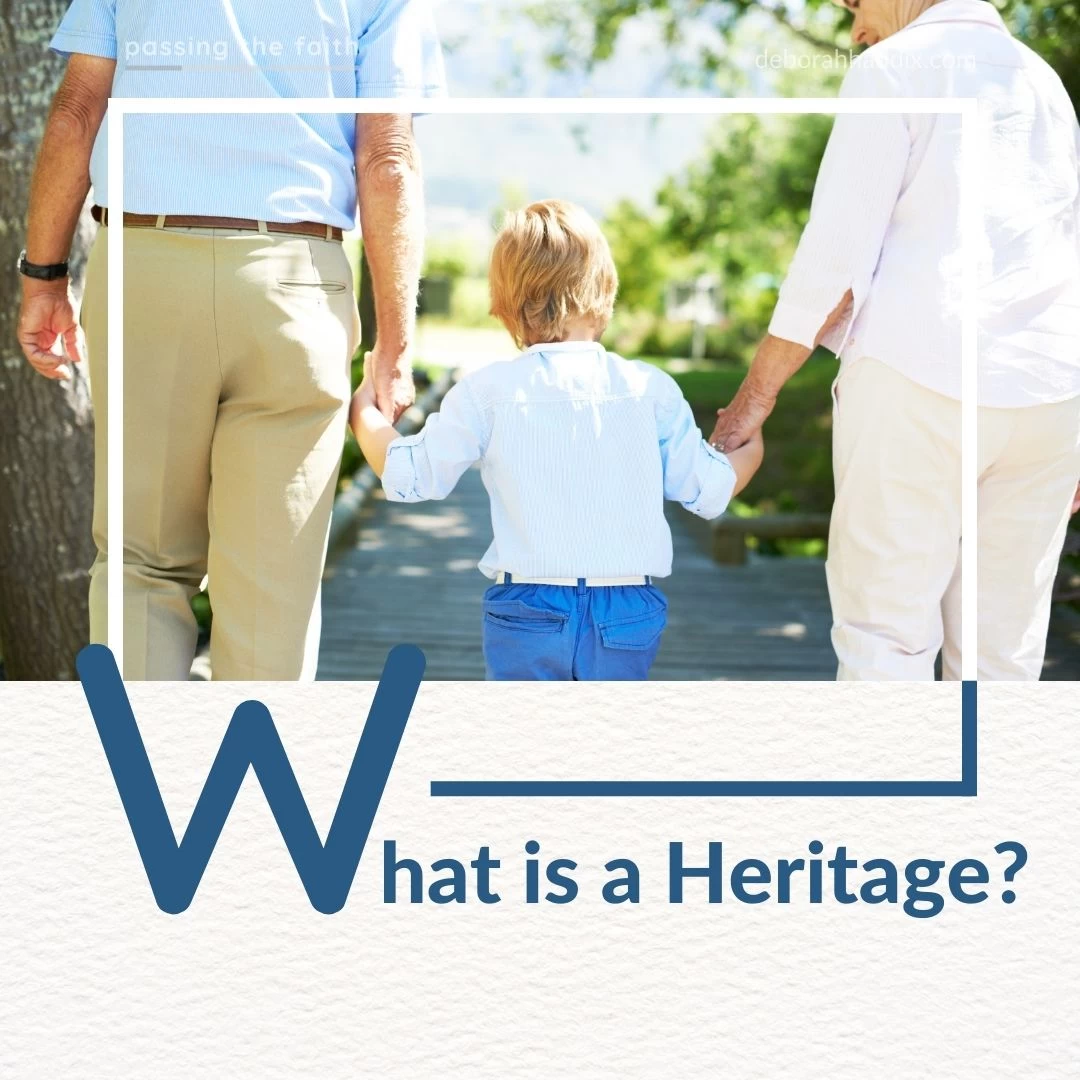In our interactions with families and on the website, we talk much about PASSING THE FAITH. Two other phrases that are commonly tossed around are BUILDING A LEGACY WORTH LEAVING and LEAVING A HERITAGE.
As we, patriarchs and matriarchs, consider our families and our hopes for the future generations, I think it might be a good idea for us to dig in a bit to acquire a better understanding of these phrases.
Legacy or Heritage?
In the phrases above, both the words legacy and heritage are used. While these words are often used interchangeably, their meanings are not quite the same. I think it’s important to note the difference before moving on.
According to Merriam-Webster, heritage is “property that descends to an heir.” In other words, it is something you receive.
On the other hand, a legacy is “a gift by will especially of money or other personal property.” A legacy, then, is something you give.
Essentially, we build a legacy to give to our future generations who accept it as a heritage.
A good man leaves an inheritance to his children’s children.
Proverbs 13:22a
What is a Heritage?
Everyone leaves a legacy. We all pass something to the future generations of our family, whether that something is positive or negative.
If everyone leaves a legacy, it stands to reason that everyone receives a heritage. Again, this can be either positive or negative.
In their book, Your Heritage, authors J. Otis Ledbetter and Kurt Bruner define heritage as “the spiritual, emotional, and social legacy that is passed from parent to child.” This definition tells us that a heritage has three distinct, yet interrelated parts. It’s much like a three-strand cord. In Ecclesiastes 4:12, Solomon refers to a threefold cord as one that is not easily broken. The three strands being much stronger together than any one or two of them are apart.
This gift of a three-strand heritage cord ties our future generations to their past, gives them security in the present, and offers hope for their future.
Spiritual
In some families, this vital strand is totally neglected. However, we are all spiritual beings in need of spiritual understanding and expression. Our yearnings for spiritual sustenance and purpose, universal.
French mathematician and philosopher Pascal observed that there is a God-shaped vacuum inside the soul of each and every person. From this, he concluded that the only way to fill the emptiness was through an authentic relationship with the true Jehovah God. In more recent years, evangelist and author John Ortberg put it this way, “The soul seeks God with its whole being. Because it is desperate to be whole, the soul is God-smitten and God-crazy and God-obsessed. My mind may be obsessed with idols; my will may be enslaved to habits; my body may be consumed with appetites. But my soul will never find rest until it rests in God” (Soul Keeping).
The spiritual strand is all about relationship with God. Now, it is crucial to remember that no one can give God to another. Only God can bequeath God. However, we can be disciple-makers, passing our knowledge of and love for God to the future generations so that they will, themselves, come to know, love, and serve Him.
Emotional
Each of us is an emotional reflection of the environment in which we were raised. The emotional environment of our childhood profoundly impacting our emotional well-being as adults. For example, those raised in an atmosphere of love and acceptance tend to be secure and demonstrative adults. Those from critical and/or distant families tend toward insecurity and away from demonstrations of love or affection.
The emotional strand is an important component in the three-cord heritage we give to our children and grandchildren. As best we can, we need to be intentional about surrounding them with love and security. It is, also, essential that we not stuff emotions behind closed doors but model and discuss them in a healthy manner.
Social
How we relate to others as adults has much to do with how social issues were handled in our families when we were young. It is from our parents and grandparents that we learn how to treat a spouse. Our siblings are our learning partners when it comes to the important social skills of sharing, caring, and fighting. Our formative years are spent with our families in many highly social contexts: eating meals, playing games, taking vacations, completing chores. And these are done together!
The social strand is all about human relationships. The early experiences of children and grandchildren – whether involving laughter or tears – will leave their mark on who the future generations of our family become and how they interact with others.
Three strands – spiritual, emotional, and social. Each strand influencing the others. Each one an important element in tying our future generations to their past, giving them security in the present, and offering hope for their future.










